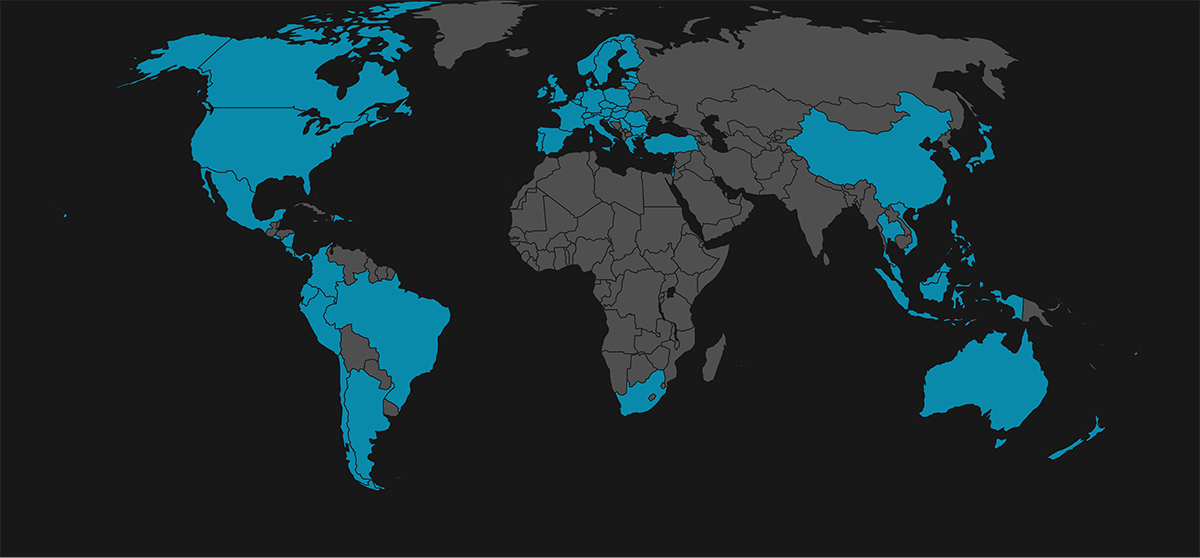Global Voice for Webex: Everything You Need to Know
Managing voice connectivity for global Webex deployments shouldn't feel like solving a puzzle with missing pieces. Yet for many enterprises, that's exactly what it's become—juggling multiple carriers, navigating complex compliance requirements, and struggling to maintain consistent call quality across continents.
This comprehensive guide covers everything you need to know about Webex voice options, implementation strategies, and best practices for international deployments.
Understanding Webex's Evolution as a Complete Platform
Webex has transformed from its early days as a video conferencing tool into a complete collaboration ecosystem recognized in Gartner's Magic Quadrant. The platform now encompasses Webex Calling—a cloud-based phone system with enterprise-grade features—alongside Webex Meetings for video collaboration, and Webex Contact Center for omnichannel customer engagement with AI-powered capabilities.
This evolution allows organizations to standardize on a single platform for both unified communications and contact center needs. The integration capabilities across the portfolio make Webex particularly attractive for enterprises with existing Cisco infrastructure. However, this powerful platform still faces a critical challenge: delivering consistent, high-quality voice connectivity across global operations.
The Global Enterprise Voice Challenge
Operating across multiple countries introduces complexities beyond simply finding phone numbers. Each region brings unique telecommunications regulations, compliance requirements, and technical challenges. Data sovereignty concerns vary by country, emergency calling regulations differ between E911 and E112, and number portability rules change at every border.
For global contact centers, voice represents your first line of customer support—the direct connection to your brand. Poor call quality damages brand reputation and impacts your bottom line. When agents struggle with dropped calls or connection delays, customer satisfaction plummets and operational efficiency suffers.
Managing voice infrastructure across regions becomes overwhelming. IT teams coordinate with multiple carriers, each with different support processes and billing systems. The result? Increased management overhead, inconsistent service quality, and limited visibility into performance.
Webex Cloud Voice Connectivity Options
Webex offers several approaches to voice connectivity, each with distinct advantages and limitations:
Webex Native PSTN provides the simplest deployment with built-in Cisco Calling Plans plans and unified billing. However, coverage limitations become apparent quickly when expanding into emerging markets, as Cisco Calling Plans are only available in 19 countries (primarily North America and Europe)

Cloud-connected PSTN through Cisco's certified carrier program offers broader coverage while maintaining integration. As there is only coverage in 65 countries worldwide, gaps remain, particularly in Asia-Pacific, Latin America, the Middle East, and Africa. Furthermore, customers may need to work with multiple carriers to get the coverage they need.
-
Bring Your Own Carrier (BYOC) through third-party SIP providers offers maximum flexibility for global coverage. Organizations connect preferred carriers via cloud or local gateways, filling coverage gaps while maintaining control.
Choosing the Right Voice Solution
Selecting the optimal voice strategy requires evaluating organization size, global reach, and complexity. Cost versus functionality represents another critical balance—while native plans offer simplicity, third-party providers often deliver better value through volume discounts and flexible pricing.
Scalability determines your ability to adapt as business needs evolve. Can you quickly provision numbers in new markets? How easily can you adjust for seasonal demands? The right solution grows with your business rather than constraining it.
When assessing third-party providers, look beyond geographic coverage. You need proven Webex deployment experience, comprehensive SLAs, proactive monitoring, and 24/7 support. Consider providers with successful deployments in your industry—case studies validate real-world performance beyond marketing promises.
Call Routing Strategies for Webex Contact Center
Three primary methods connect voice traffic to Webex Contact Center:
SIP Trunking delivers VoIP connectivity for on-net calls, providing superior control and cost efficiency by eliminating per-call charges and reducing latency.
Call Forwarding offers quick implementation, but per-call charges and limited control make it better suited for low-volume needs.
Direct Routing through certified providers balances the simplicity of cloud deployment with enterprise performance requirements.
AVOXI's Webex Integration: Filling the Global Voice Gap
AVOXI addresses Webex's coverage limitations with direct SIP connectivity spanning 150+ countries—particularly strong in underserved regions. Our extensive number inventory includes local, toll-free, mobile, and specialty numbers to establish the right presence in every market.
Two-way calling with guaranteed local caller ID in over 100 countries improves answer rates by up to 2x. This TrueLocal capability proves especially valuable for sales teams and proactive customer service.
The integration extends beyond basic connectivity. Our software-delivered platform provides real-time analytics, built-in fraud prevention, and advanced routing with automatic failover. What truly sets AVOXI apart is combining technical capability with human expertise—our follow-the-sun support model ensures expert assistance whenever needed. With 99.995% uptime and a 4.49 MOS score, we consistently exceed industry benchmarks.
Best Practices for Global Deployments
Successful deployments start with thorough planning. Assess your complete footprint, including anticipated expansion. Document compliance requirements by region and plan, and define redundancy strategies upfront.
Implementation benefits from a phased approach. Start with pilot locations to validate connectivity before broader rollout. Establish testing protocols that verify actual user experience, not just basic connectivity. Develop training programs for both IT teams and end users.
Ongoing optimization ensures long-term success. Monitor performance continuously and stay informed about regulatory changes—telecommunications rules evolve constantly.
Moving Forward with Confidence
Global voice connectivity shouldn't limit your Webex deployment. Whether expanding into new markets, consolidating carriers, or improving call quality, the right approach transforms voice from a challenge into a competitive advantage.
If your organization needs voice connectivity beyond Webex's native coverage, requires consistent quality across all regions, or wants to consolidate voice management under a single provider, it's time to explore how AVOXI can complete your Webex deployment.
Ready to enable a truly global voice for your Webex deployment? Reach out today to learn how AVOXI can fill your coverage gaps, improve call quality, and simplify voice management across your entire organization.

